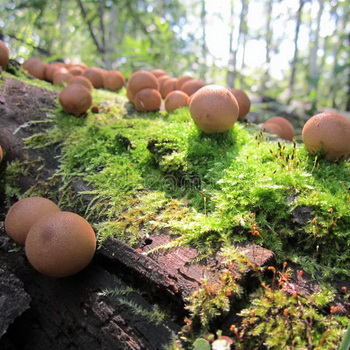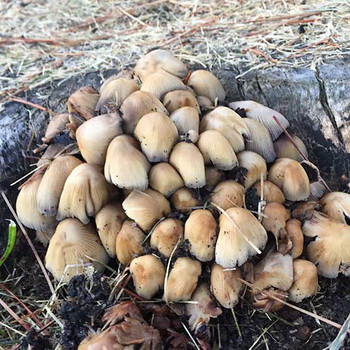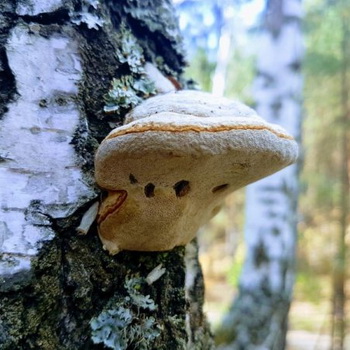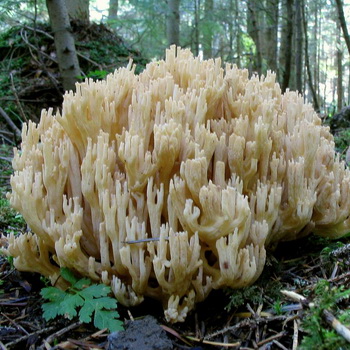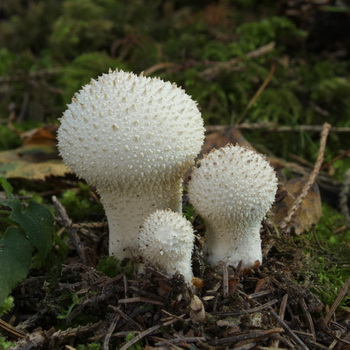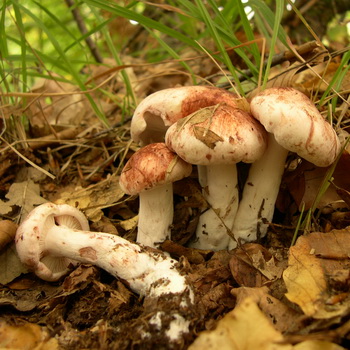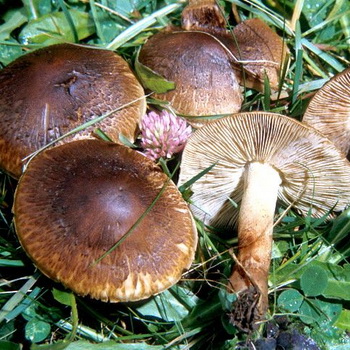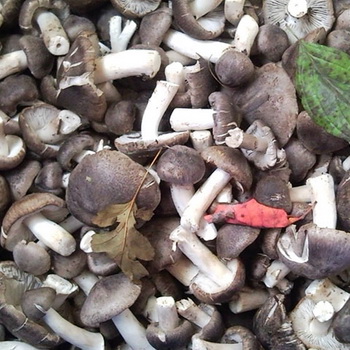Mushrooms with a porous fruit body
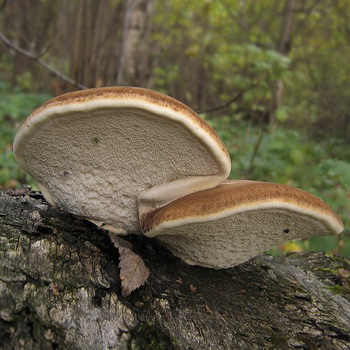
Porous fungi
Tinder fungus flat (Ganoderma applanatum).
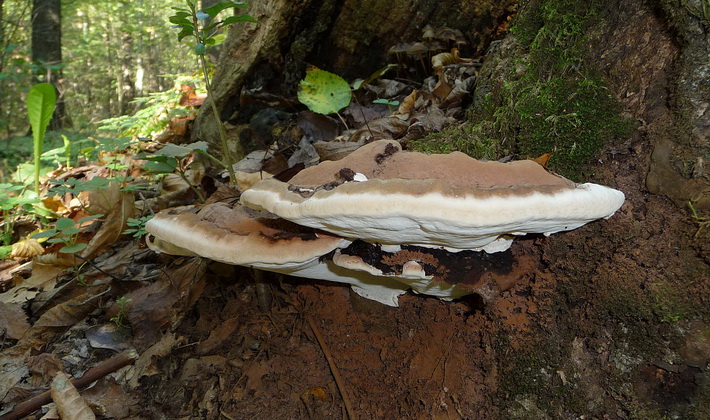
Family: Ganoderma (Ganodermataceae).
Season: all year round.
Growth: fruiting bodies are usually located low, often close to each other.
Description:
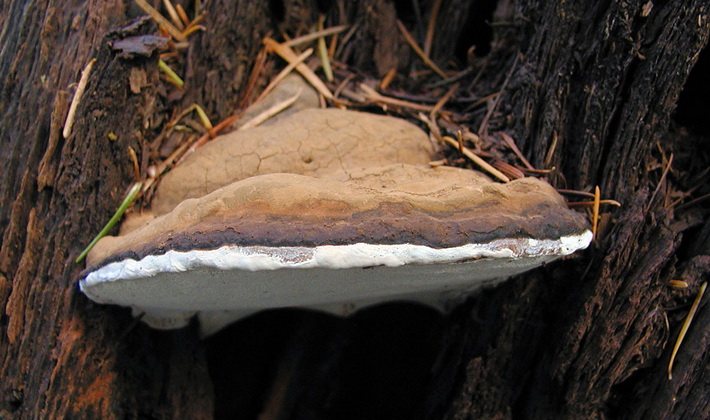
Hymenophore tubular, white or creamy white; it darkens very much even with a slight pressure, which allows you to draw on it with a twig or match. The hat is flat, with irregular influxes on top, covered with a matte brown crust. The outer (growing) edge is whitish.
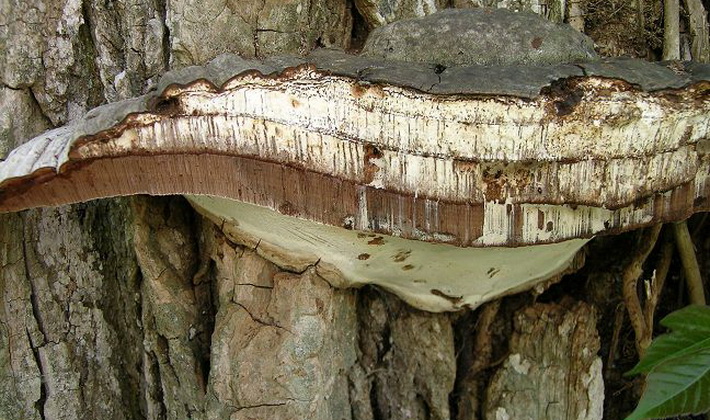
The flesh is brown, cork-like.
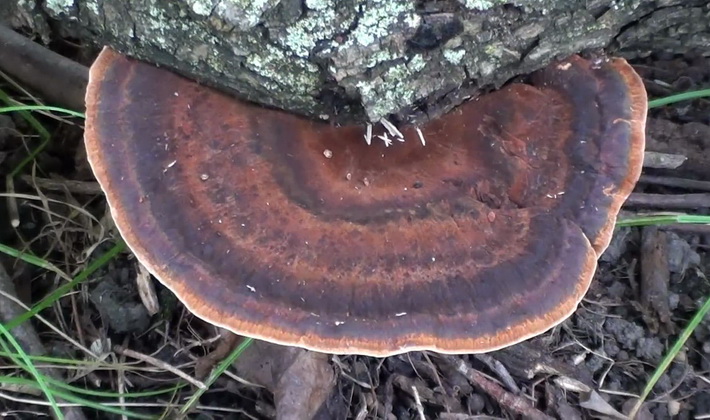
The fruiting body is porous, often coated on top with a layer of rusty brown spore powder.
Inedible. The pulp is hard and tasteless.
Ecology and distribution:
It grows on stumps and deadwoods of deciduous trees (most often birch). Occasionally, weakened living trees or coniferous wood are affected.
Tinder fungus (Inonotus hispidus).
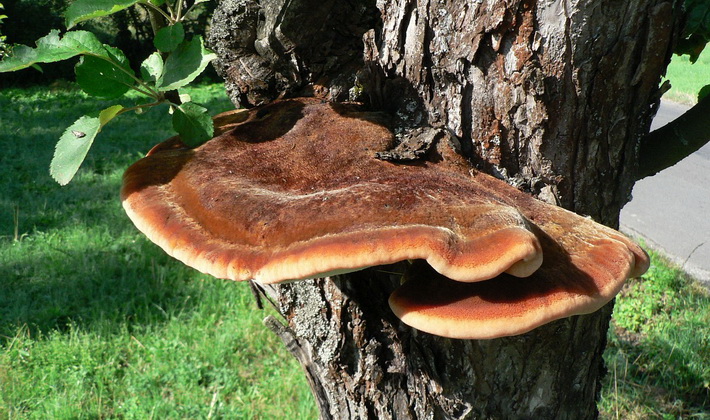
Family: Gimenokhetovye (Hymenochaetaceae).
Season: since mid-May.
Growth: singly or grafted in groups of up to three hats.
Description:
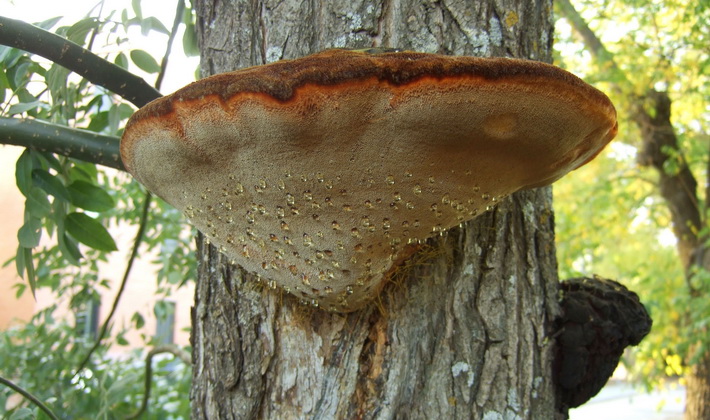
Fruit bodies are annual, triangular in cross-section, first moist and spongy, later dry and hard. Pores are rounded or angular, the surface of the pores is yellowish-brownish, then light red.
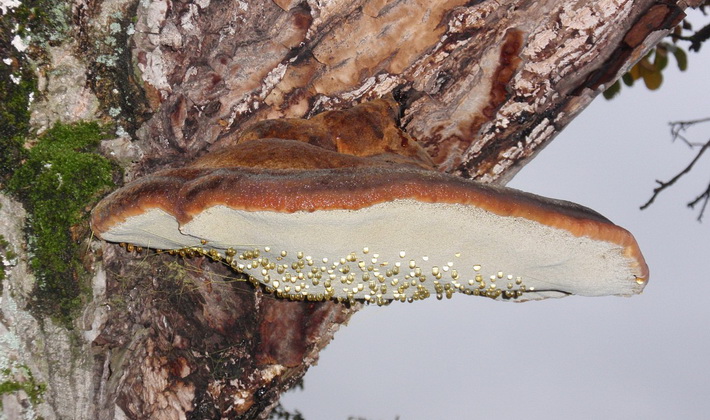
The tissue of young fruiting bodies is saturated with moisture; large pores - traces of removing excess moisture (guttation).
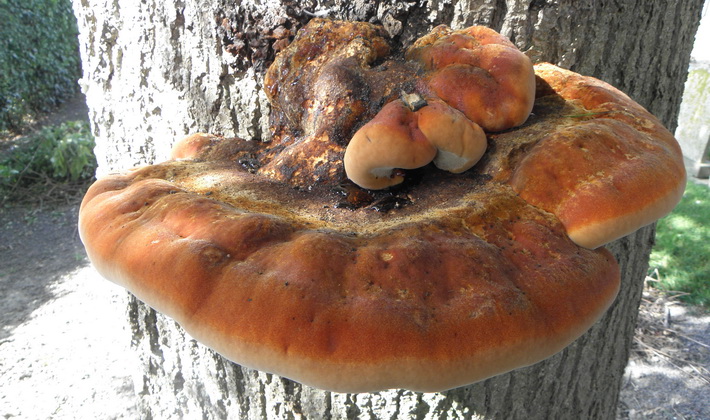
The surface is felt-hairy, reddish, with time it becomes bristly or rough.
This porous mushroom is inedible.
Ecology and distribution:
It grows on the trunks of living broad-leaved trees, causing rot of the core of the tree. In Russia, distributed in the southern regions, especially in the Caucasus.
Odorous tinder (Gloeophyllum odoratum).
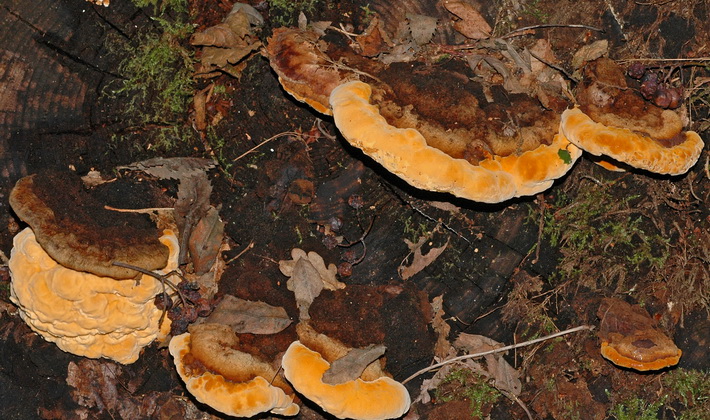
Family: Gleophyllae (Gloeophyllaceae).
Season: all year round.
Growth: fruiting bodies are single or fused in several, sometimes imbricate.
Description:
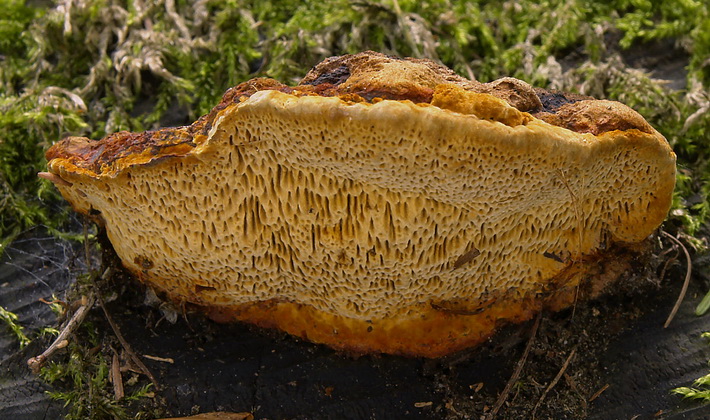
The fabric is cork, rusty-brown, with an anise odor. The hymenophore is yellowish-brown, darkens with age, the pores are large, round, slightly elongated.
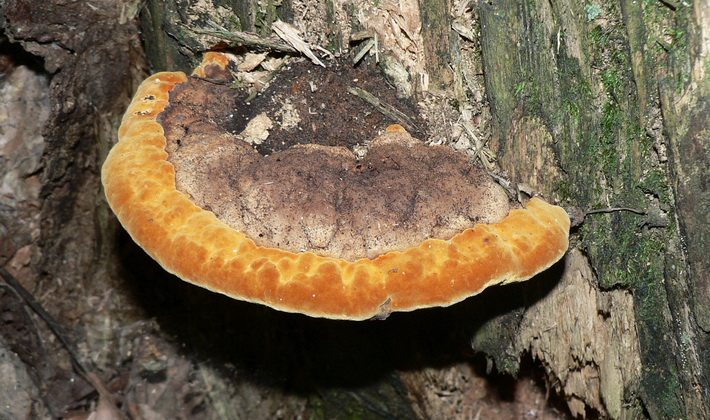
The edge of the hat is red. The surface is first felt, later coarse, tuberous, from reddish to almost black.
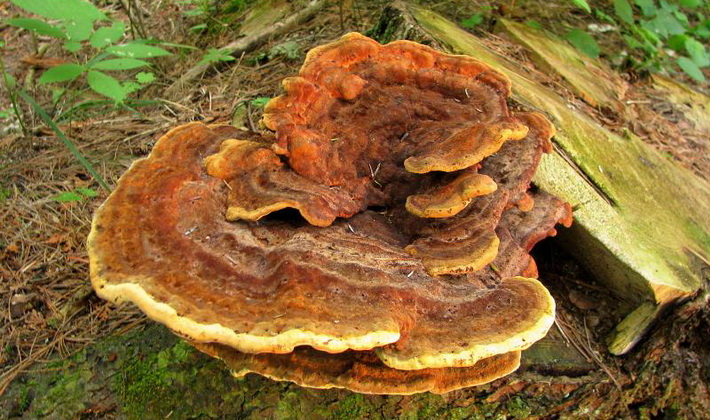
Fruit bodies are perennial, diverse in shape, often with yellowish growths.
Inedible.
Ecology and distribution:
Grows on stumps and dead trunks of conifers, mainly spruce. It is found on processed wood.
Tinder funnel sulfur-yellow (Laetiporus sulphureus).
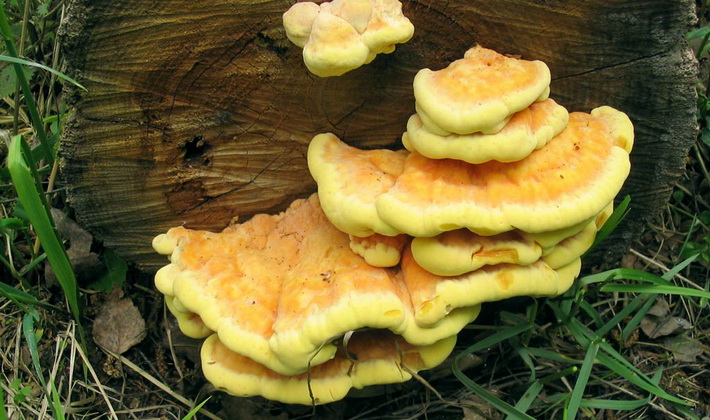
Family: Polypore (Polyporaceae).
Season: end of May - September.
Growth: solitary and in tiled groups, usually not high above the ground.
Description:
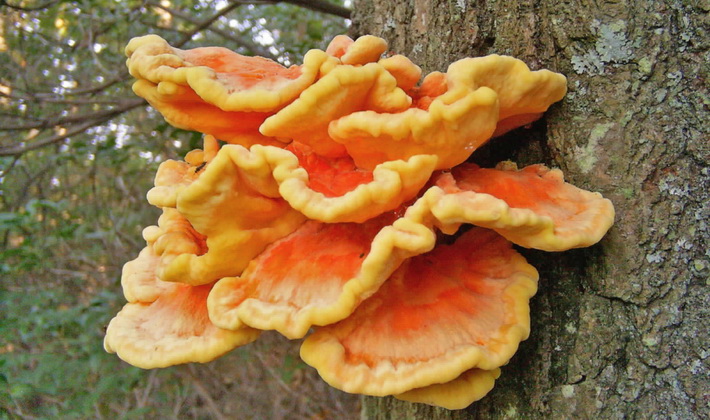
Ripe mushroom has the shape of an ear, consisting of several fused fan-shaped pseudo-hats, often sitting on one common base. The surface of the mushroom is porous, uneven, orange, often with a yellowish edge.
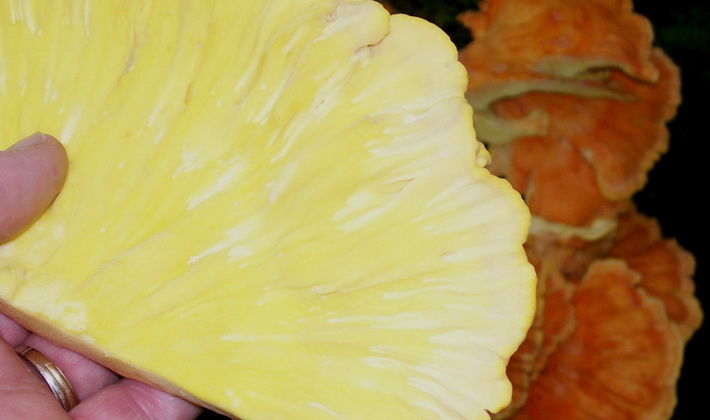
Pulp: fleshy, resilient, juicy, light yellow with a specific smell, then dry, whitish, later hard and woody.
Tubular hymenophore with small rounded or serrated pores; tubules yellow, 2-4 mm long.
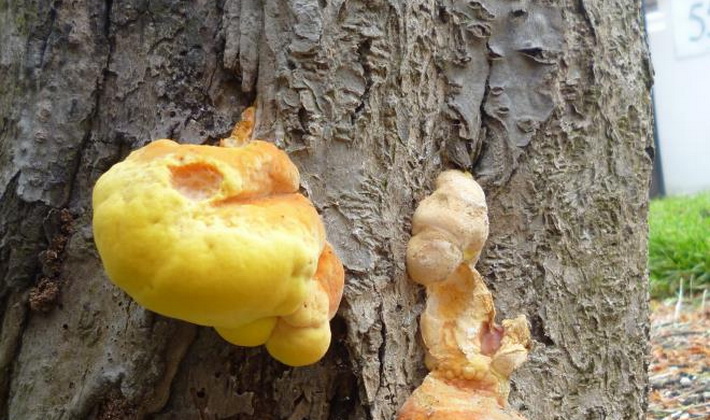
The young mushroom looks like a drop-shaped fleshy mass from intense yellow to orange.
The mushroom is edible at a young age. Fruit bodies with bright coloration, moist to the touch, and having a mild taste without sourness should be collected. After boiling (30-45 min), it can be used in salads, fried or marinated. In Germany and North America, the mushroom is called "wood chicken"; dishes from it are considered delicious. Older fungi can cause indigestion, nausea, vomiting, and dizziness.
Ecology and distribution:
It grows in deciduous forests, in parks and gardens on dead or old, weakened trees. It affects poplar, oak, willow, linden, birch, pine, maple, walnut, chestnut, fruit trees, and less commonly other species. Causes reddish-brown stem rot, causing the wood to dry out.
Tinder fungus (Trametes hirsuta).
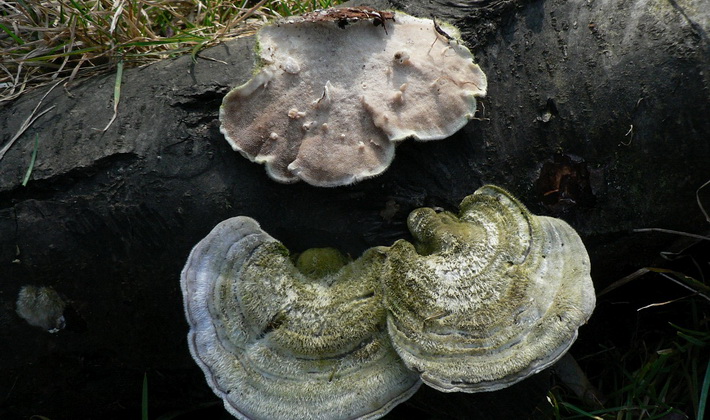
Family: Polypore (Polyporaceae).
Season: spring - late autumn.
Growth: single and in groups.
Description:
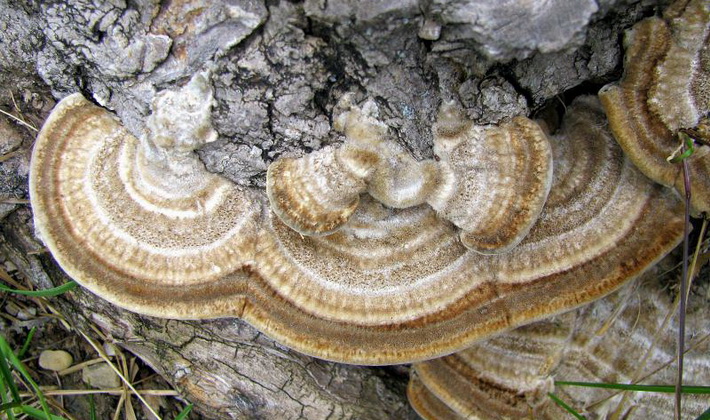
The fruiting bodies are annual, wintering, usually in the form of semicircular or kidney-shaped seated hats. The hairs growing in bunches 4-5 mm long are vertical, rigid, gray.
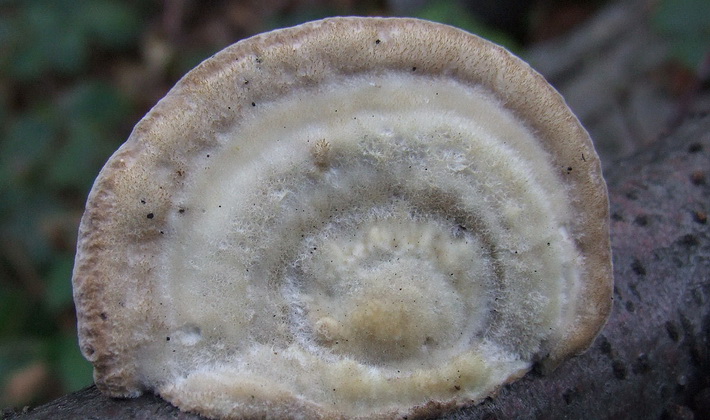
The hymenophore is tubular, off-white in youth, then turns gray, the pores are thick-walled, rounded, and equal. The surface is bristly, concentrically furrowed, from whitish to brownish-gray.
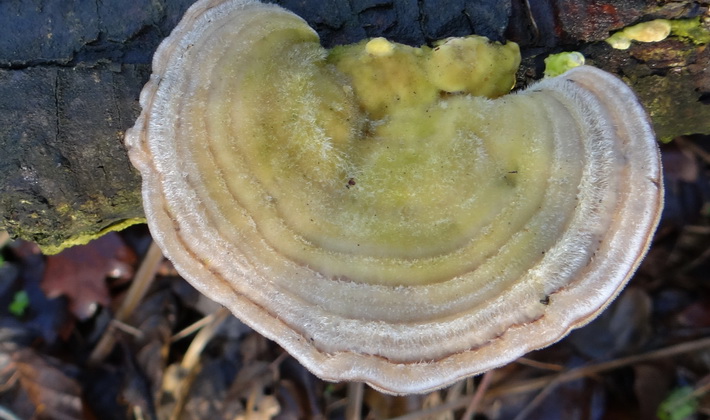
The fabric is leathery, flexible, white, becomes stiff with age, the taste is slightly bitter.
Inedible.
Ecology and distribution:
Grows on stumps, branches, dead, dying trunks of deciduous trees. It occurs in shady forests (especially in thickets of bird cherry), in clearings, clearings; sometimes on wooden buildings and fences near a forest.
Multi-colored tinder (Trametes versicolor).
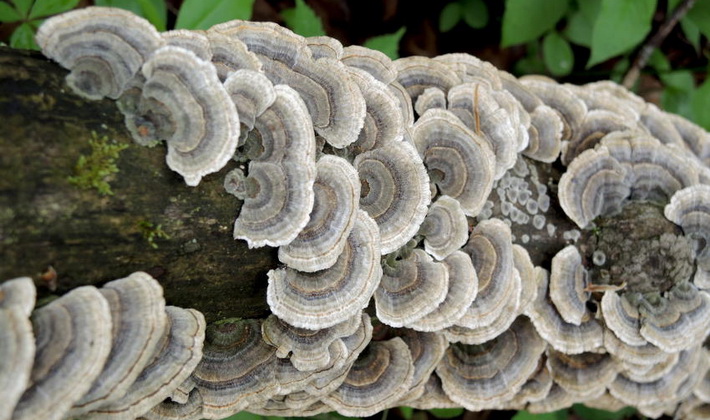
Family: Polypore (Polyporaceae).
Season: mid-June - end of October.
Growth: imbricate groups, often fused with bases.
Description:
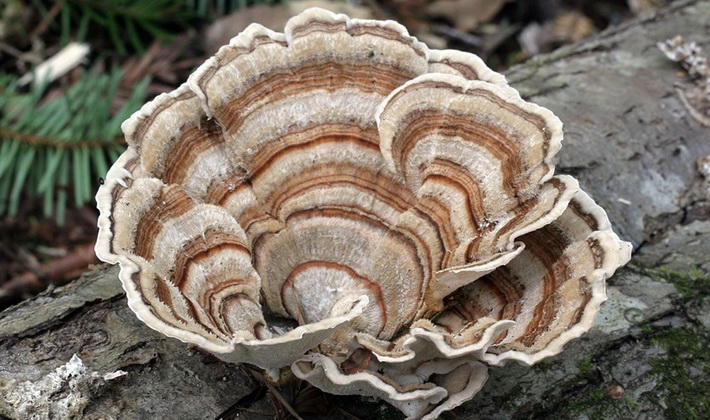
The surface is velvety, with concentric thin sinuous multi-colored zones, color from bluish-brown to ocher-yellow. A tubular layer with small roundish irregular pores, yellowish, later.
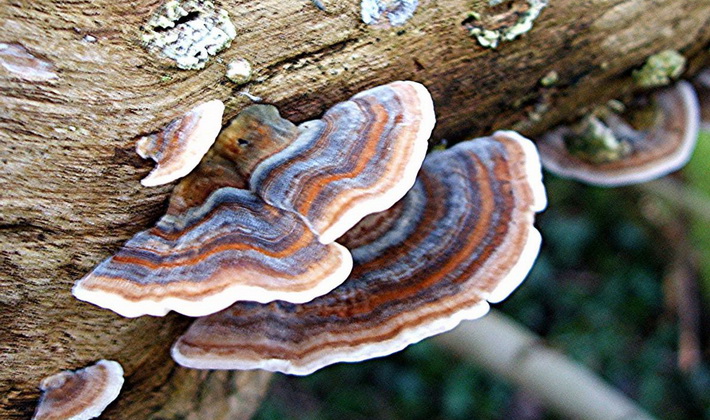
The fruiting body is perennial, fan-shaped or rosette-shaped.
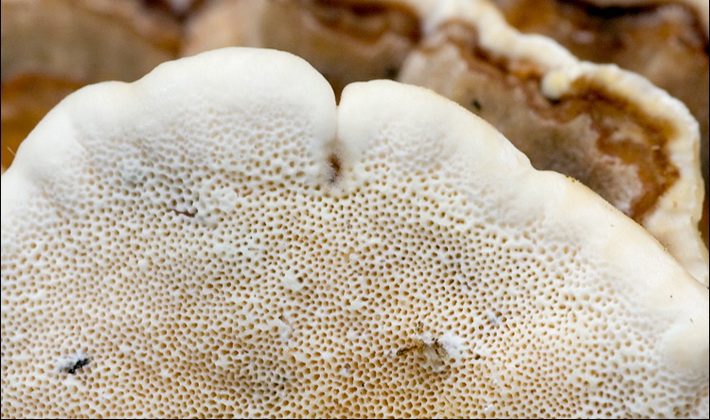
The pulp is leathery, light, white or brownish, with a pleasant smell.
Inedible.
Ecology and distribution:
Grows on dead wood, woodpiles, stumps of deciduous trees (birch, oak), rarely on conifers (spruce).
Tinder humpback (Trametes gibbosa).
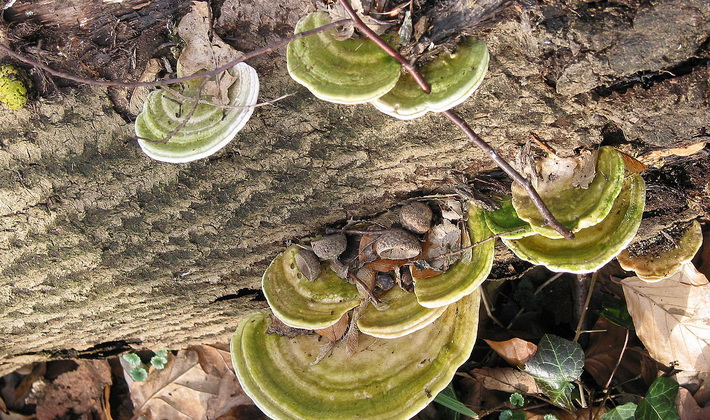
Family: Polypore (Polyporaceae).
Season: summer - late autumn.
Growth: solitary and with tiled groups
Description:
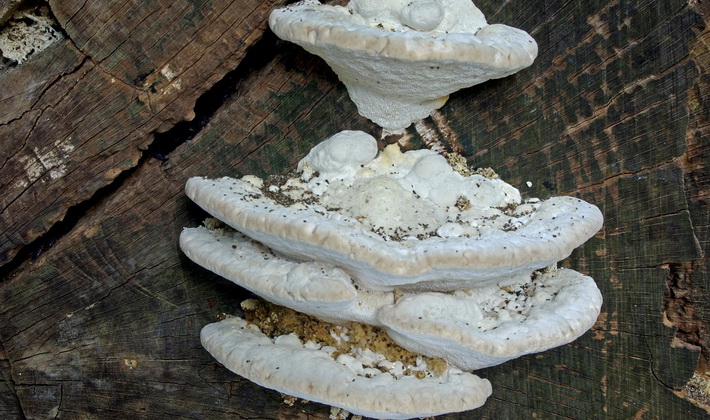
At the base is a small hemispherical hump.
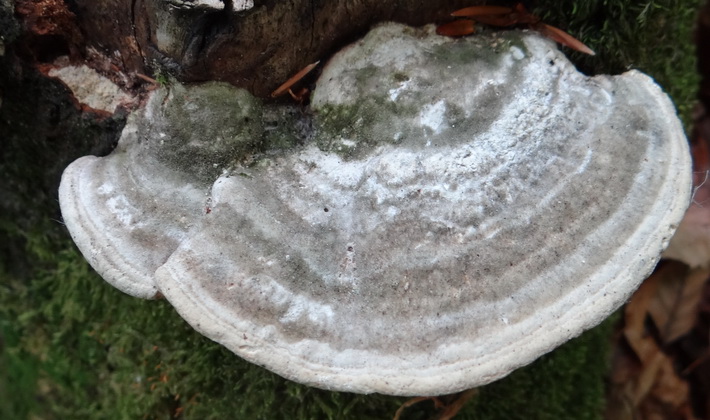
The fruiting bodies are annual, relatively flat, sometimes uneven. The fruiting bodies are covered with algae, from which they turn green. The hymenophore is white or light yellow, the pores are rectangular, elongated. The surface is slightly pubescent, whitish-grayish, bare with age, light ocher.
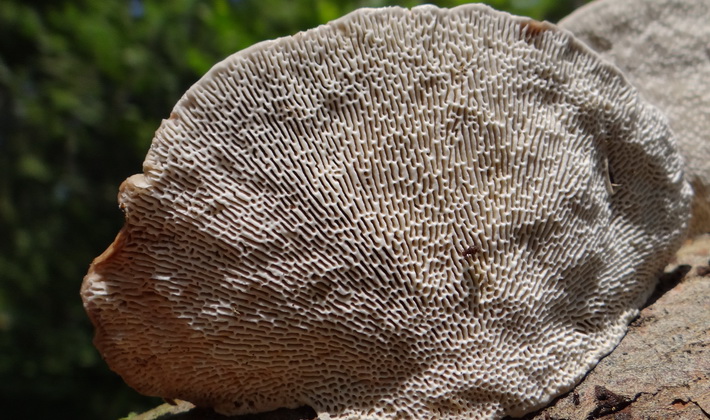
The fabric is cork, dense, white, less often yellowish.
Inedible.
Ecology and distribution:
It grows mainly on deadwood trunks, large deadwood and deciduous tree stumps (usually on hornbeam and beech, less often on alder, birch, poplar. It also occurs on living trees.
Tinder funnel Swiss (Phaeolus schweinitzii).
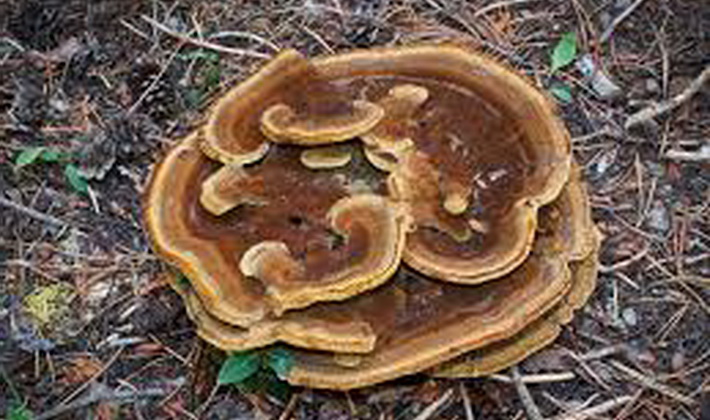
Family: Phomitopsis (Fomitopsidaceae).
Season: spring - autumn.
Growth: in groups.
Description:
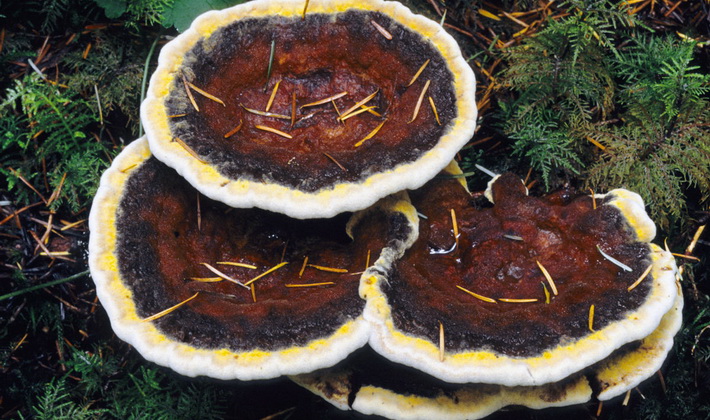
The hat is flat in shape, covered with warts or hairs, sulfur-yellow at a young age, then rust-brown or dark brown, with concentric zones. The edge of the hat is yellow.
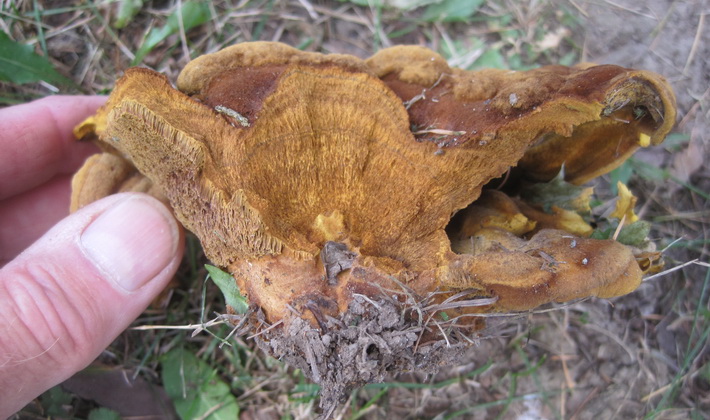
The hymenophore is tubular, olive yellow, then brown.

The flesh is tan or rusty brown.
Inedible.
Ecology and distribution:
Grows on protruding from the ground or covered with bedding roots of pine, larch (less often fir, cedar, spruce), on stumps, sometimes on the bottom of the trunks. As a result of root decay, infected trees often dry out.
Birch tinder (Piptoporus betulinus).
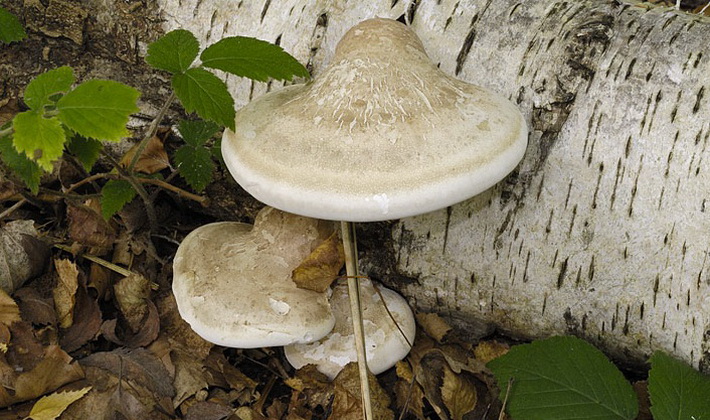
Family: Phomitopsis (Fomitopsidaceae).
Season: June - November.
Growth: in groups and singly.
Description:
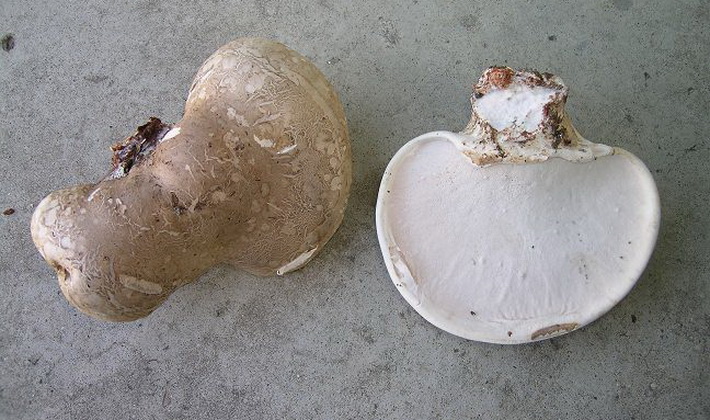
The pulp is white in color, with a bitter taste and a strong mushroom smell. The hymenophore is tubular, the pores are round or angular, first white, then gray-brown.

The surface is smooth, covered with a thin, easily detachable whitish, later yellowish or brown skin.
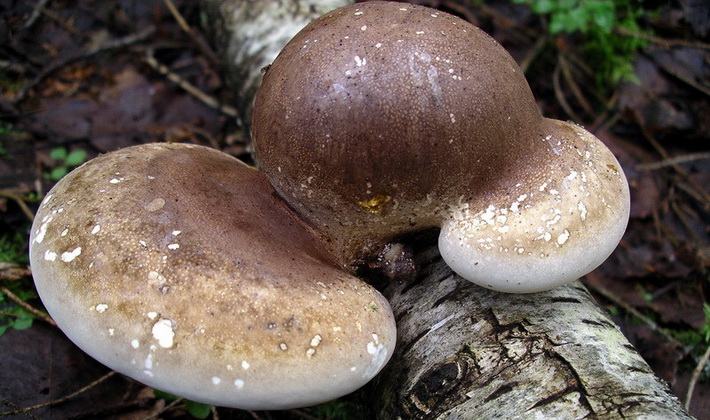
The fruiting bodies are annuals, first almost spherical, then horseshoe-shaped.
At a very early age, the fungus is edible, later becomes tough. Contains polyporenic acid - a biologically active substance with a pronounced anti-inflammatory effect.
Ecology and distribution:
It grows only on birches (deadwood, dry, stumps, very rarely on living trunks).
Other porous body mushrooms
Giant Meripilus (Meripilus giganteus).
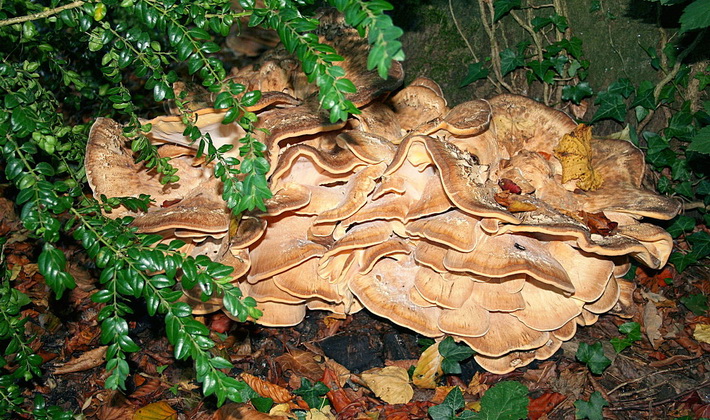
Family: Miripilovye (Meripilaceae).
Season: autumn.
Growth: single and in groups.
Description:
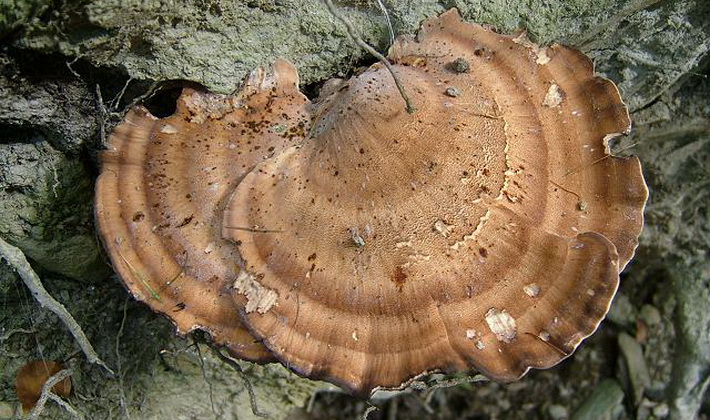
Hats are thin, with a smooth or soft-scaly surface, brownish. The fabric is fleshy, white, darkening on a break, sour to taste.
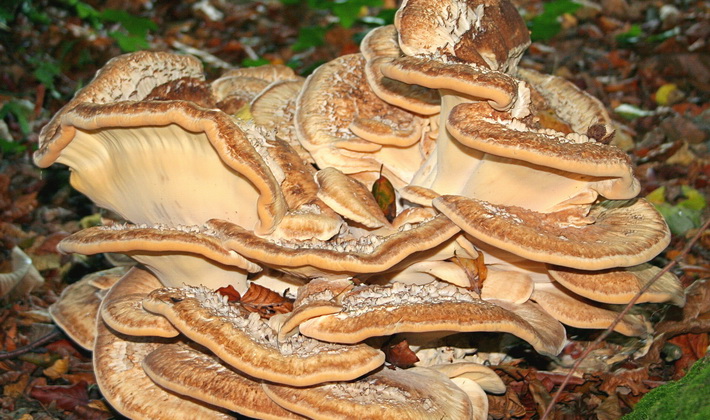
Fruit body in the form of numerous fan-shaped or wedge-shaped hats, connecting in a common base.
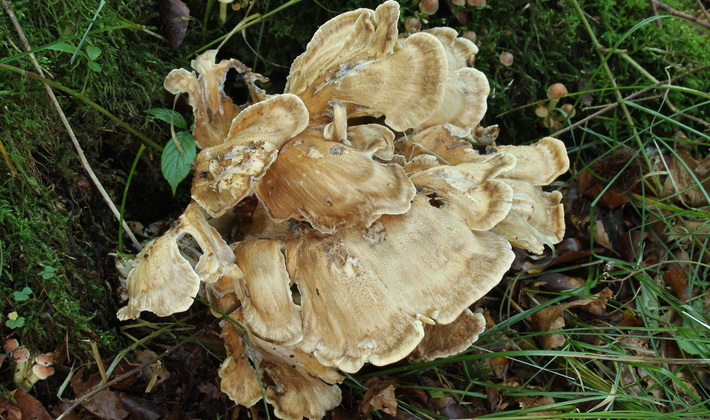
Small pore gimenophore, white or yellowish, darkening from touch.
Young specimens can be eaten; older ones are inedible due to rough flesh.
Ecology and distribution:
Grows at the base of trunks, stumps, on hardwood roots, often on oak and beech, occasionally on conifers.
Common liverwort (Fistulina hepatica).

Family: Hepatic (Polyporaceae).
Season: mid July - end of September.
Growth: singly or in a splice group.
Description:
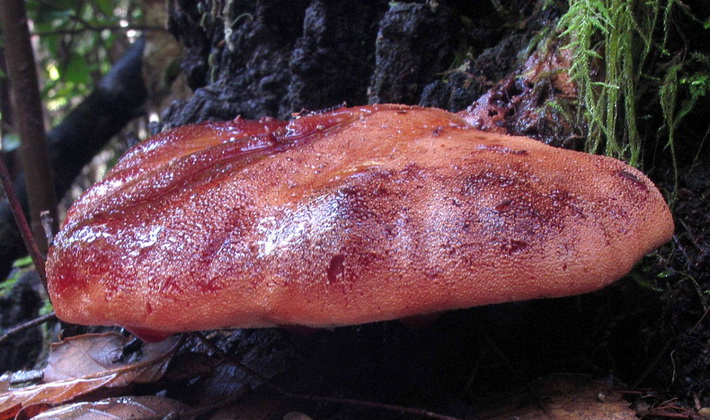
The skin is moist, red or brown, rough, with gelatinous appearance with age. Young mushrooms in shape resemble a bull’s tongue, later they become wider.
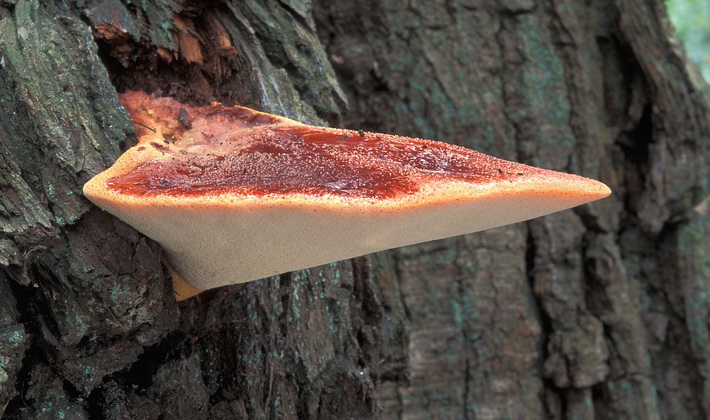
The hymenophore consists of easily separable tubules; the porous surface is moist, straw-yellow or pink; when pressed, it turns red.
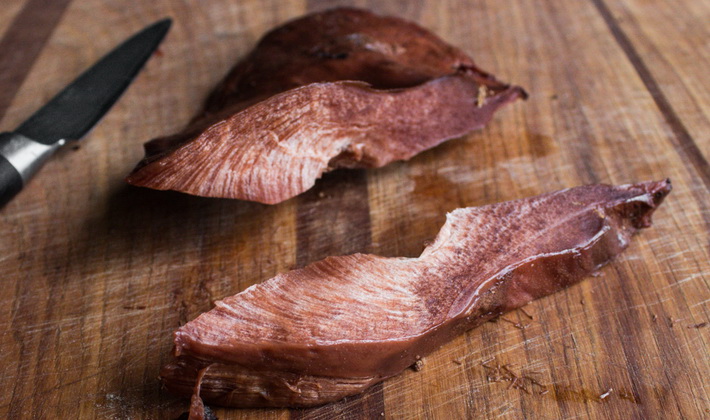
The flesh resembles fresh meat or liver; It has a slight fruity smell and sour taste.
Young mushrooms are edible and tasty. Used fried and in salads
Ecology and distribution:
It grows in deciduous forests, on old living oaks, at the base or in hollows. Causes brown rot of the core.
Reddish Hapalopilus (Hapalopilus rutilans).
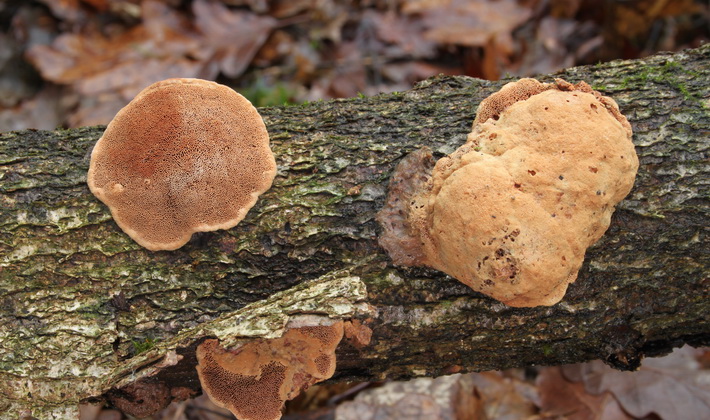
Family: Polypore (Polyporaceae).
Season: beginning of June - September.
Growth: single and in groups.
Description:
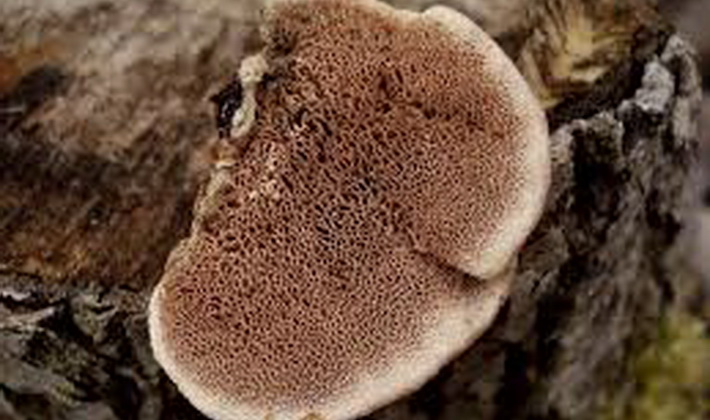
The pulp is elastic, spongy, dry, reddish-brownish. A tubular layer with irregular pores, one-color with a hat, but more reddish.
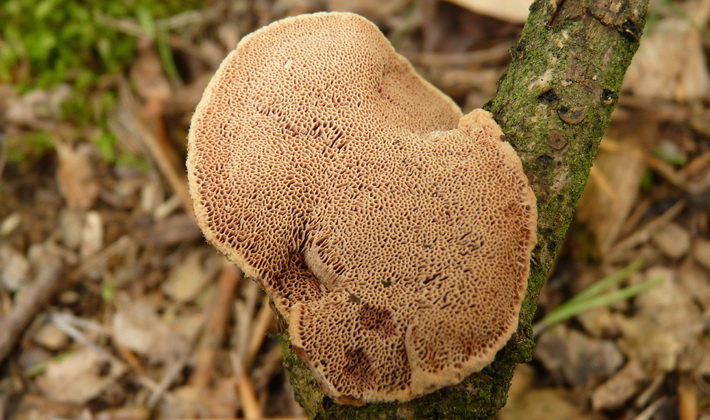
The surface is felt-velvety, light brown tones, darkens when touched.
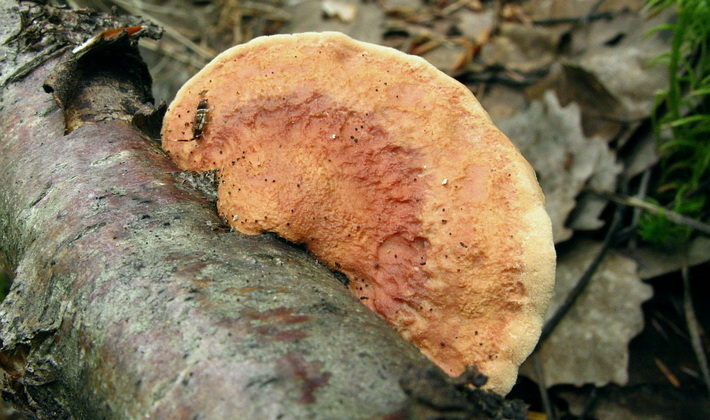
Fruit body weakly attached, thick at base, margin rounded, then thin.
Inedible.
Ecology and distribution:
It grows mainly on dead branches, rarely trunks of various hardwoods, as an exception on spruce and pine.
Trichaptum fir (Trichaptum abietinum).
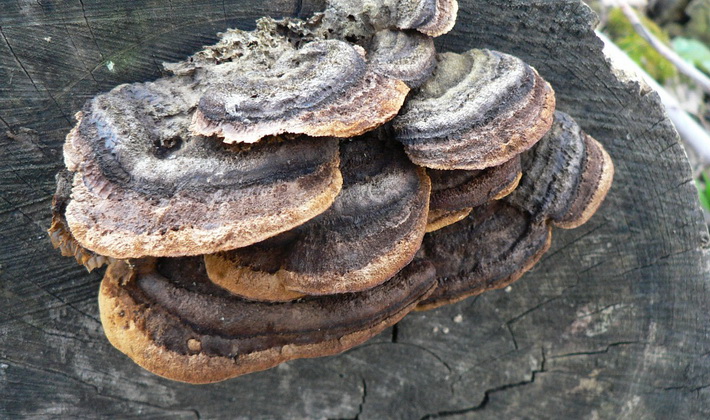
Family: Polypore (Polyporaceae).
Season: mid June - November.
Growth: numerous fan-shaped groups.
Description:
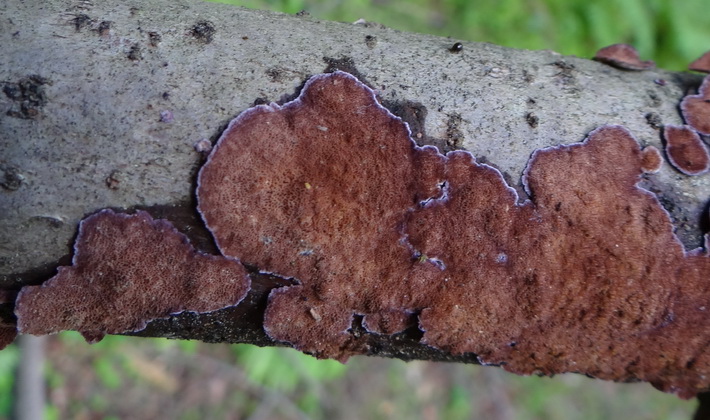
The surface of the hats is felt-velvety, shaggy, whitish-grayish, often covered with algae. The hymenophore is cellular, dissected, lilac tones.
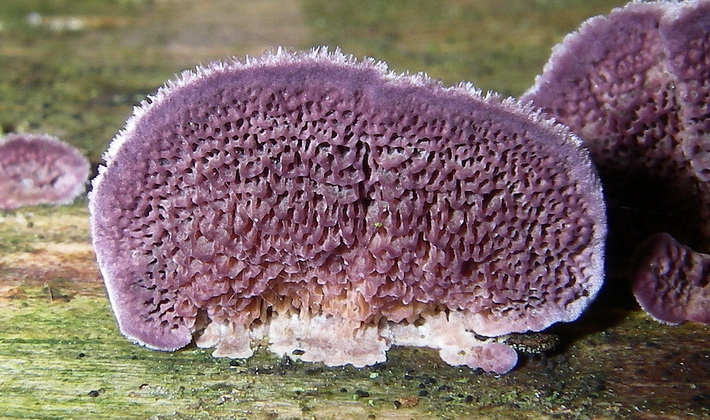
The pulp is elastic, whitish.
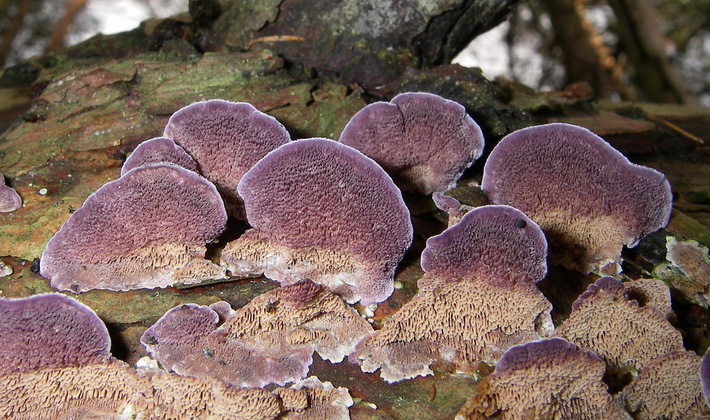
The fruit body is fan-shaped.
Inedible.
Ecology and distribution:
Grows on dead trunks and stumps of conifers, especially pine, also on fir, spruce, cedar and larch, less often on birch and maple.
House mushroom (Serpula lacrymans).
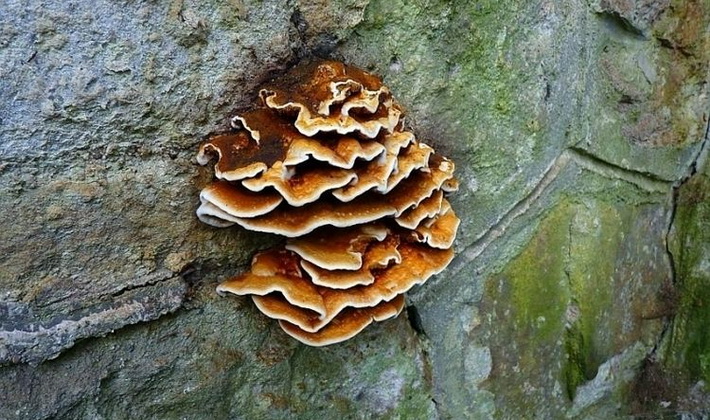
Family: Coniophore (Coniophoraceae).
Season: all year round.
Growth: single and in groups, sometimes merging into a homogeneous mass.
Description:
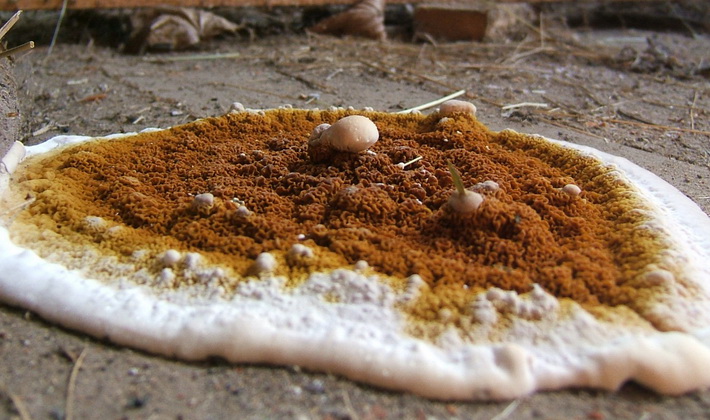
Drops of liquid often protrude along the edges of the fungus. The pulp is a cottony consistency with a heavy earthy odor.
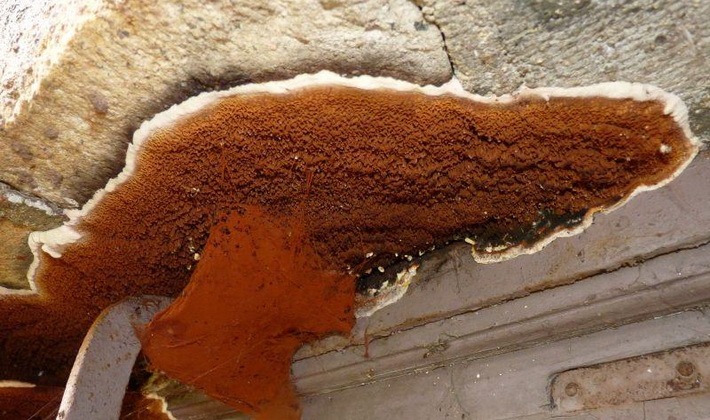
The fruit bodies are fleshy-membranous with a dense cotton-like litter. The edge of the fruit body is thick, felt, white.
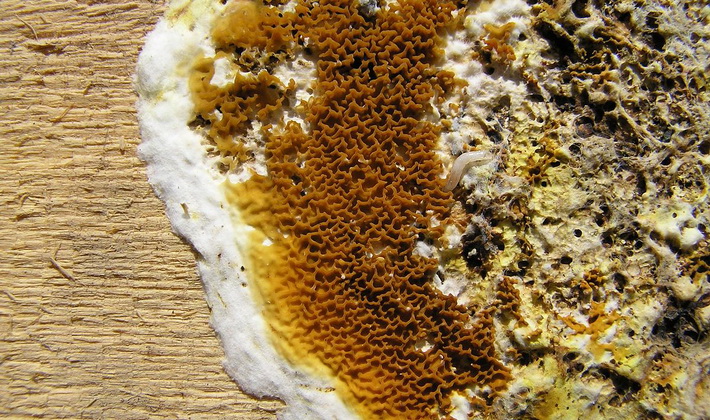
The hymenophore is coarse-sinuous-folded, sometimes mesh-folded or tuberous, ocher, ocher-brown, dark rusty-brown.
Ecology and distribution:
It grows on felled wood mainly of coniferous species, in buildings, it is rare in nature. Most often begins to develop in humid, poorly ventilated rooms. Fruit bodies are formed where the mycelium, through a crevice or crack, comes out into the light and fresh air. The mushroom is able to quickly destroy the wooden structure.
Trembling Merulius (Phlebia tremellosa).
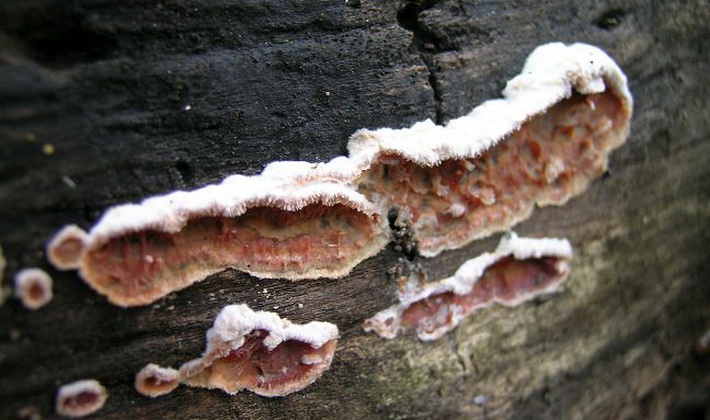
Family: Meruliaceae (Meruliaceae).
Season: October December.
Growth: in groups.
Description:
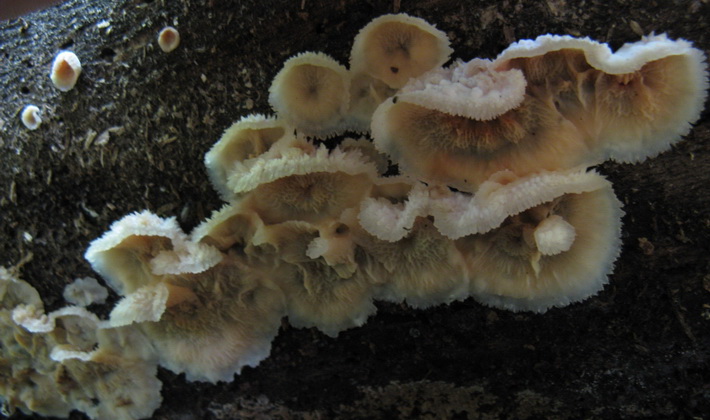
Neighboring hats are often fused with each other. The edge of the hat is transparent-wet, gelatinous. The giomenophore is mesh, mesh-sinuous.
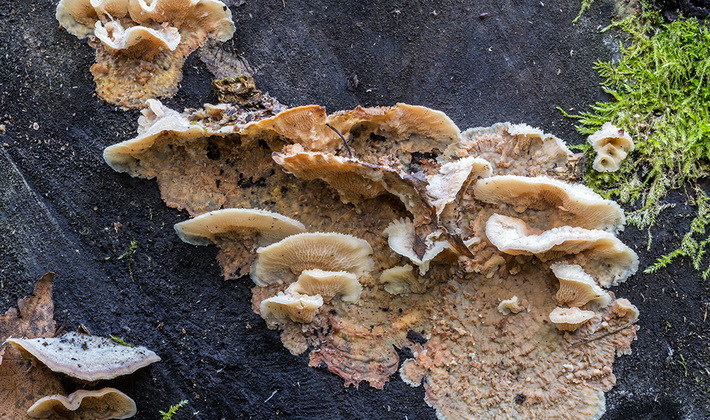
Young fruiting bodies open, hymenophore outward. The pulp is elastic, dense.
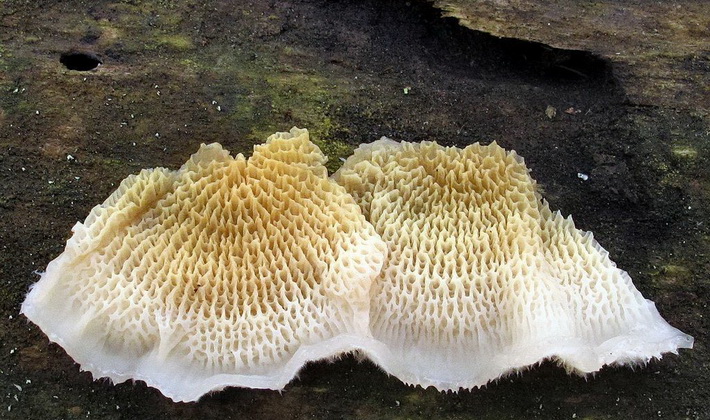
The bent hat to the touch is damp, on top it is soft-fleecy, light.
Inedible.
Ecology and distribution:
It grows on dead wood, stumps and processed hardwood - birch, aspen, linden, elm, mountain ash, bird cherry. Sometimes found on conifers.
Stereum stiff-haired (Stereum hirsutum).
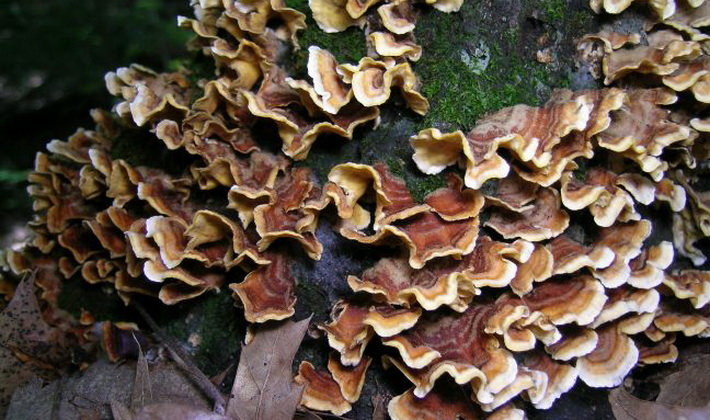
Family: Stereo (Stereaceae).
Season: July - December.
Growth: numerous tiled groups or rows of colonies
Description:
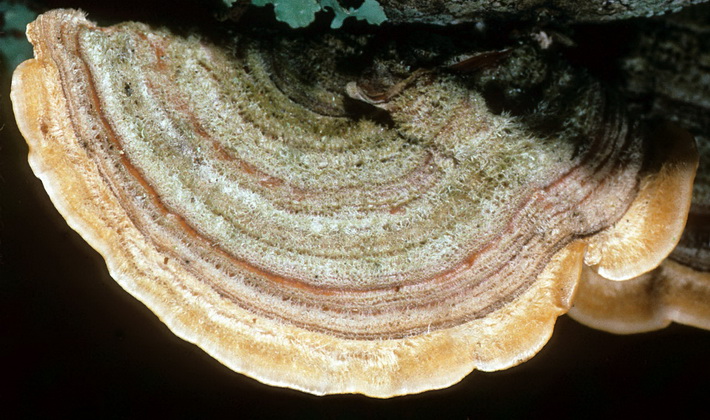
The young fruiting body is spotted, prostrate, ocher, yellowish-brown with a yellow edge. A mature fruit body is bent, fan-shaped, grown sideways or sessile, with a wavy edge.
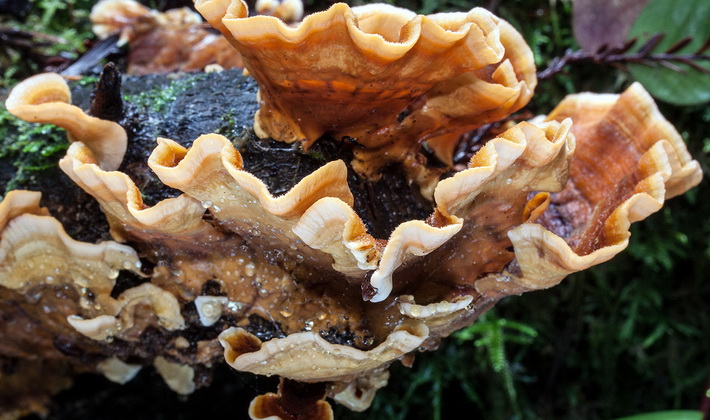
Upper side pubescent, hairy, ocher gray.
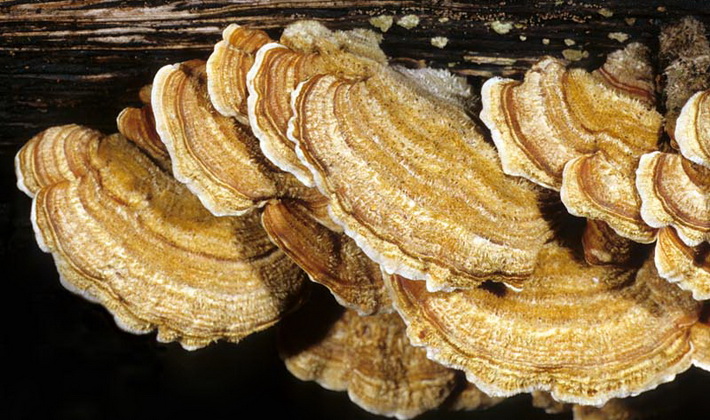
The pulp is leathery, hard, yellow-ocher.
Inedible.
Ecology and distribution:
It grows on dead hardwood (oak, birch, aspen), on stumps, on wounded living trees, on processed wood, on separate branches.
Heterobazidion perennial (Heterobasidion annosum).
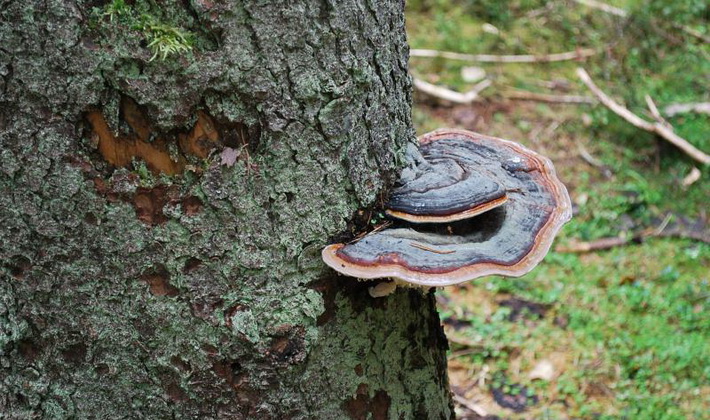
Family: Bondartsevievye (Bondarzewiaceae).
Season: all year round.
Growth: on the stumps, the butt of the trunks protruding from the soil, the roots of living and dead trees.
Description:
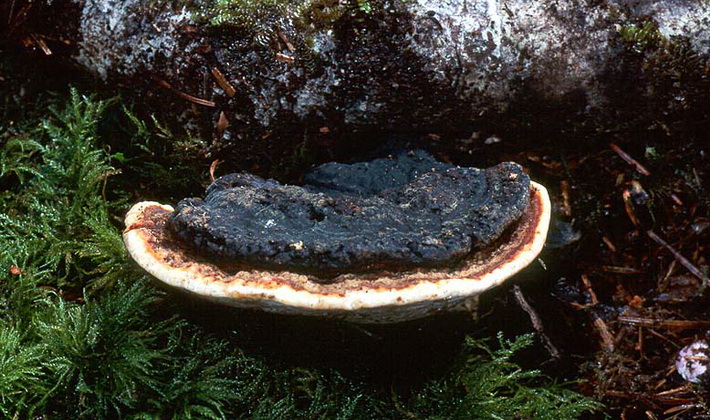
The surface is concentrically furrowed, covered with a thin brown or brown crust.
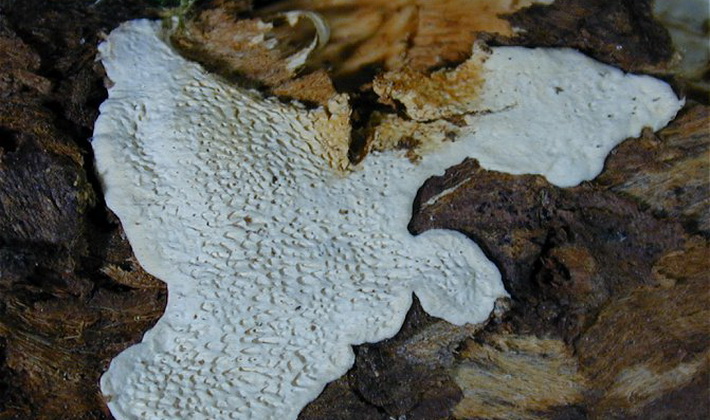
The pulp is ocher, woody. The growing edge is white or wavy.
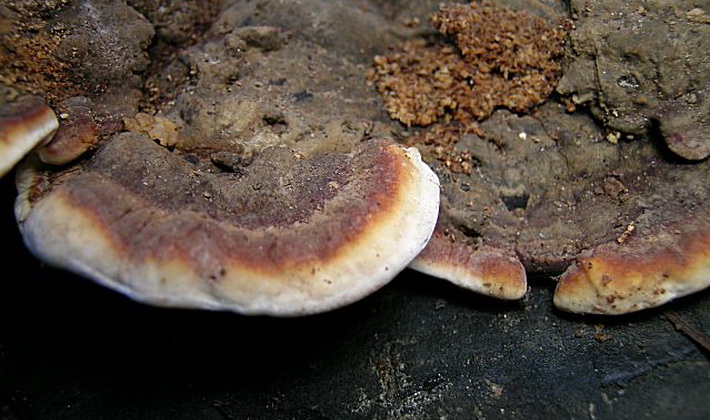
The fruiting body is perennial, irregular in shape, very light, with relatively large pores. The surface is concentrically furrowed, covered with a thin brown or brown crust.
Inedible; contains antitumor substances.
Ecology and distribution:
It grows in forests and parks mainly on pine, rarely found on deciduous trees.
